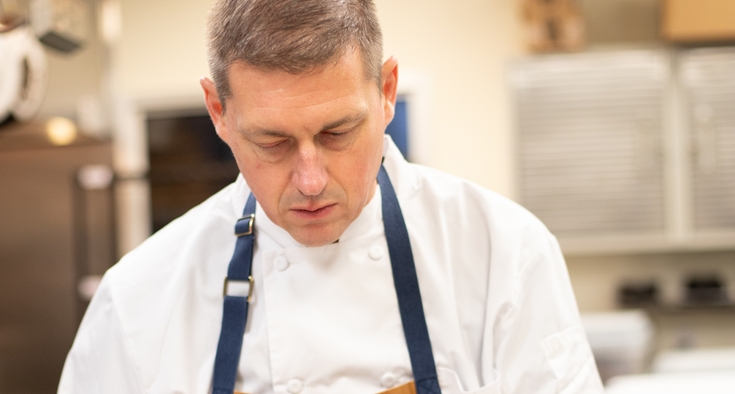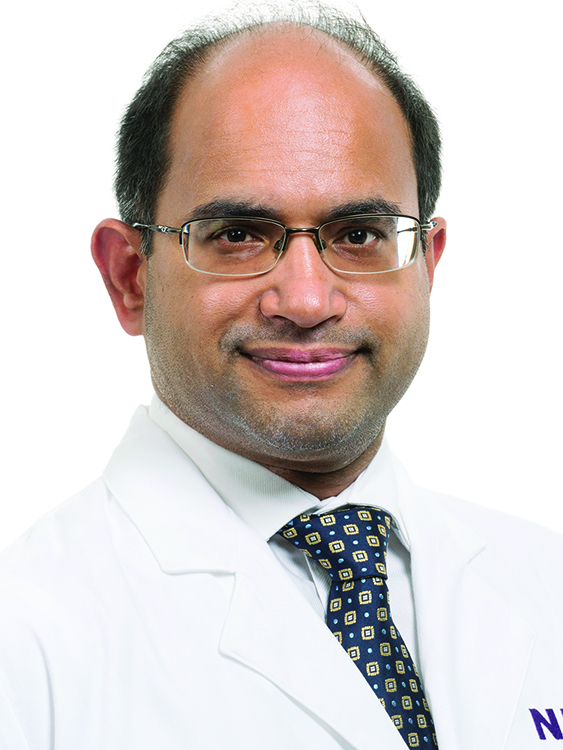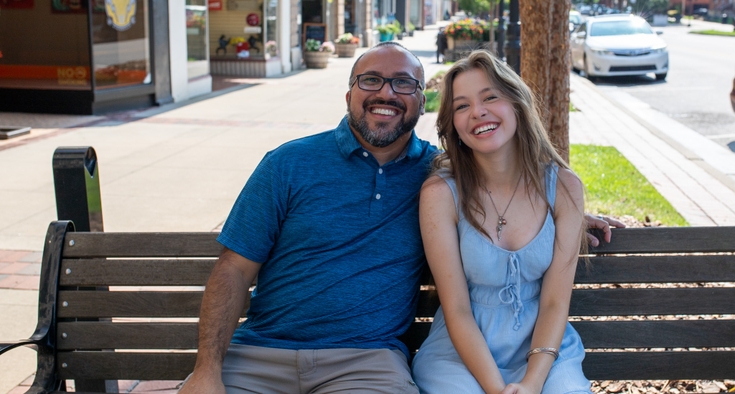Pop quiz: What body part is most important to a chef?
If you said tastebuds, you’re probably right — but arms might be a close second.
Chef David Arey spent 60 hours a week in a restaurant flipping sauté pans, manipulating mozzarella into burrata cheese, and lugging bins of brisket. Cooking professionally is a two-armed operation, and over three decades as a chef, Arey learned to be ambidextrous. So when he felt recurring dull pain in his left bicep and neck, Arey told himself to keep moving.
“Put your head down and keep grinding until it's time to go home. That's what cheffing is,” Arey said. “It’s a no-room-for-failure scenario. You gotta get it done.”
In restaurants, chefs have backup. But in 2020, Arey began working as a private chef in Charlotte. Although he hires servers for larger events, the food preparation and cooking are all on him.
In November 2024, he was gearing up for the holiday season when his familiar bicep pain intensified over a weekend, and then: “It was like somebody hooked a hose up to my muscles and drew the air out of them,” Arey said. “I felt numbness and tingling, and my muscles weren’t working.”
Just an hour earlier, both arms were working normally. Now, Arey suddenly couldn’t lift his left arm above his head.

Worried he was having a heart attack, 50-year-old Arey went to the emergency room. Heart issues were ruled out, and Arey was referred to orthopedic surgeon Dr. James Romanowski, who ordered MRIs of Arey’s shoulder and neck. These showed a partial tear in cartilage tissue near the shoulder called the labrum, and bone spurs along the discs on his neck, likely causing Arey’s numbness, tingling, pain and strength loss.
To get additional information, Romanowski sent Arey to neurology — and physical therapy (PT).
Participate in the activities you love, pain free. Schedule a family sports medicine appointment today.
Physical therapists: the symptom sleuths
Physical therapists are like detectives: When you’re in pain, they can help figure out why. Often, it’s more complex than imaging or a diagnosis indicates.
That’s because weakness or injury in one part of the body can change movement and posture, stressing other areas — a snowball effect, physical therapist Brandon Shore at Novant Health Arboretum Family & Sports Medicine - Charlotte said.
That’s what happened to Arey.
He likely sustained an injury at some point that caused his labrum to partially tear. Bone spurs can happen with age. And three decades of constant lifting, chopping and mixing had led to tight muscles. Now, Arey’s muscles were stuck in the contracture position and wouldn’t relax (creating “trigger points”). As the muscles pulled, Arey’s vertebrae clamped down on the nerves further, promoting more numbness and tingling — a vicious cycle.
Arey needed to get back to work. His family was counting on his income. But right now, he couldn’t even heft a frying pan.
When mindset makes a difference
Many patients are facing similar stresses when they start PT. “People don't come skipping through the front door,” Shore said. “We’re rarely meeting anybody when they're at their best.”
Shore tells them: Oftentimes, PT can get you back to what you need to do. Sometimes, PT can help you manage symptoms and build strength before surgery. And sometimes, PT won’t effectively work to fully resolve the patient’s symptoms and surgical intervention is needed. You won’t know which category you’ll fall into until you try, so give it your all, and you might surprise yourself with how much you improve.
Arey approached his PT with a chef’s mentality: “I’m gonna keep fighting to do what I do, and I’m gonna get it done.” Even if it meant working through pain.
To get Arey back to work ASAP, Shore created a two-phase plan: first, “put out the fire,” and then, “build up strength and correct the movements that caused the fire to get flared up in the first place.”
First, Shore placed thin, solid, monofilament needles into Arey’s muscle trigger points — a technique called trigger point dry needling. This relaxed Arey’s overly tight muscles, providing some pain relief and increasing mobility right away.
After a few sessions, Arey entered phase two: building muscle strength around his shoulders and improving his postural habits. Although he wasn’t pain-free, he was improving enough to get back to work with modifications.
Here, Arey’s chef mentality helped him again. “As a chef, I’m always thinking ahead as far as what dish is coming up, what's in the oven, what comes next, what dishes need to get done,” Arey said. Now, he “pre-thought” his tasks and how to complete them with his limitations.
After a lifetime of his foot on the gas, it wasn’t easy. But he reassured himself, “‘Slow down, take some big deep breaths, and start thinking objectively about how you can adapt. This is life now.’”
It helped when he saw improvements, noticing that tasks “might take me longer, and might be a little bit harder” — but he was getting it done.
‘You never know until you try’
Shore became a physical therapist after physical therapy positively changed his own life. He knows that getting a patient who is in pain to pause their busy life to do (often uncomfortable) exercises that may not produce immediate results is a tough sell.
But he still encourages patients: give it an honest try.
“I'm not saying we can help everyone avoid any surgery that's recommended,” Shore said. “But often, you can improve the symptoms enough that it's livable, and sometimes the symptoms can reduce entirely. You never know until you try.”
As of publication, Arey is working with Romanowski and neurologist Dr. Siddhartha Varma of Novant Health Neurology & Sleep - Matthews. They’re doing additional testing and watching how Arey responds to PT to see if he will eventually need a surgery.
But in the meantime, Arey is back in the kitchen. And he wants his four daughters to take note.
“I hope they see the determination and tenacity of their dad to say, ‘Hey, this is not the end. Bad things happen, and life is challenging at times,’” Arey said. “But let’s keep going.”
Editor’s note: David Arey is married to Caroline Arey, Novant Health external communications manager of the greater Charlotte region.

A play on a panzanella salad
You’ll notice there are no exact measurements provided below.
Chef Arey encourages you: “Think about building your levels of flavor just like a contractor would build a house, starting with a foundation, putting the framing in, and putting the walls up — all of these things are layers.
Food dishes are built the same way. Your foundation might be a protein and one layer of flavor might be salt and pepper, and then another layer might be a sauce. That gets you on the idea of how dishes are built.
A lot of people get hung up on recipes and always wanting to follow them to a T. That’s important for baking, but for cooking: if you like your dishes with more pepper on them, add some more pepper. So what if the recipe doesn’t call for it? That’s OK.”
Ingredients:
A few garden tomatoes
A few pieces of fruit, sliced. Pick either peaches, plums or pears.
Optional: Balsamic vinegar
Burrata cheese
Butter
Sourdough bread
Fresh mint leaves, chopped
Arugula
Olive oil
Pepper
Salt
Preparation:
Cut up your garden tomatoes into a bowl and macerate (soften) them with salt, pepper and olive oil.
Let that extract the flavors out of tomatoes — they'll weep a little bit.
Add in the arugula and mint, and maybe a touch of balsamic vinegar, to a big bowl. Add your peaches (or other fruit).
Cube the bread and toast it up in brown butter in a cast iron skillet. Add it to the bowl.
Add your burrata to the bowl. You can slice it or just place it in the center.
It makes a lovely summertime salad.

















